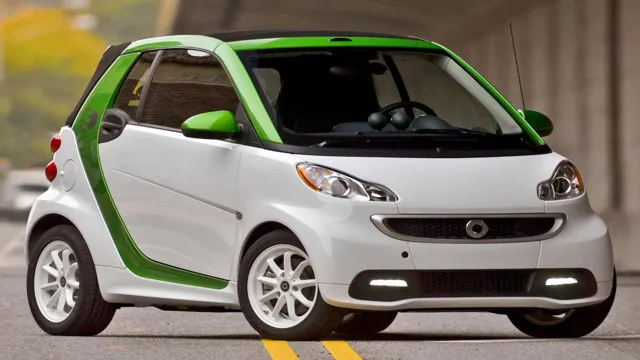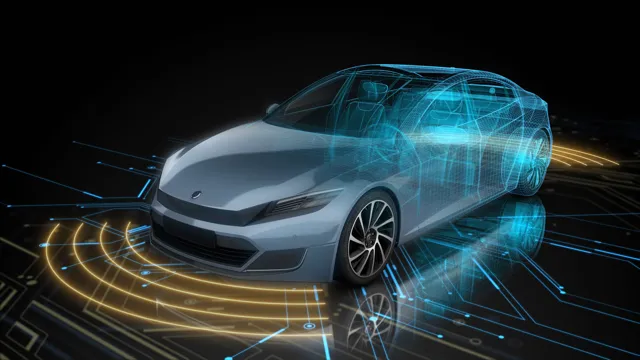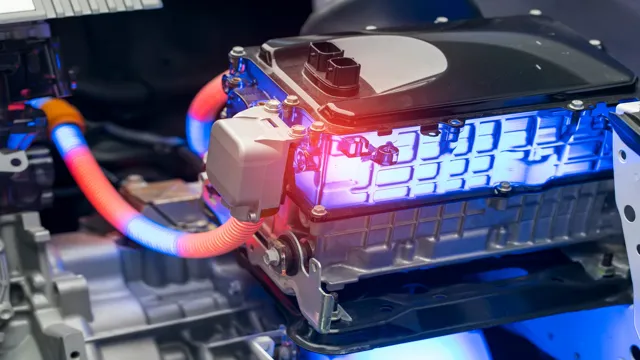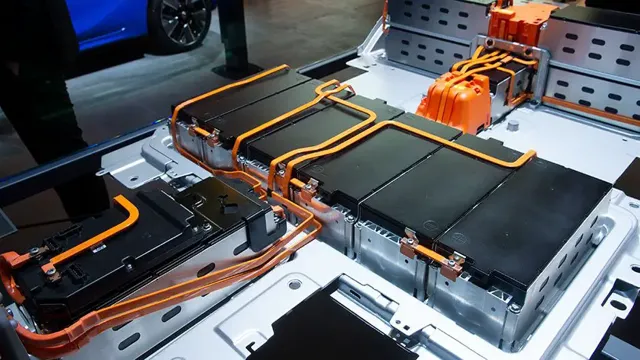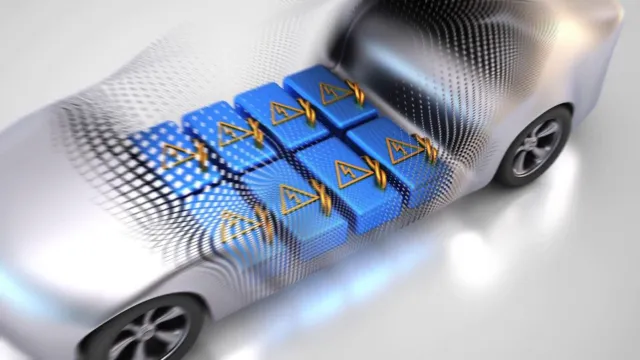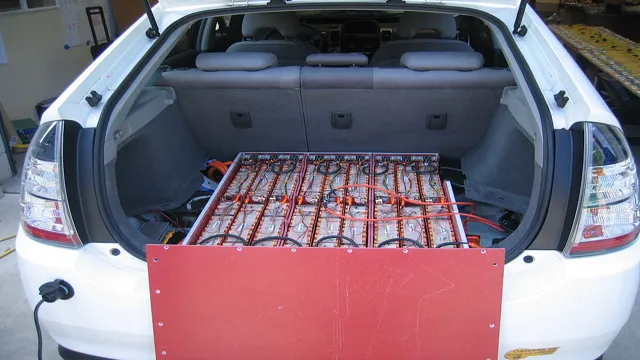Revolutionizing the Future of EVs: Japan’s Electric Car Battery Swap Station Trial Triumphs!
Have you ever found yourself stranded with a low battery on a road trip in your electric vehicle? It’s a common concern among EV owners as the technology continues to advance. However, a recent trial taking place in Japan may provide a solution to this problem. The country’s Ministry of Economy, Trade, and Industry has launched a project to test battery swap stations for electric vehicles.
The goal is to provide a convenient and efficient way for EV owners to switch out their depleted battery for a fully charged one in minutes, similar to filling up with gasoline. But will this trial be successful, and will battery swap stations become a widespread solution for EV drivers? Let’s dive into the details.
Overview
Electric car battery swap stations are slowly gaining traction, and Japan is currently testing out its first-ever battery swap station. The trial is set to run for six months until March 2022, and it’ll be conducted under the leadership of the Environment Ministry. The goal is to test the service’s viability by allowing drivers to switch their depleted batteries with fully charged ones at the swap station.
This system is expected to revolutionize the electric vehicle industry by eliminating the need for long charging times and range anxiety. Currently, electric vehicles can take hours to charge, which is inconvenient for drivers, especially those on long road trips. With this battery swap technology, drivers can quickly replenish their battery in as little as five minutes.
This innovative technology could be the answer to making electric vehicles more popular and practical for everyday use.
What is the Electric Car Battery Swap Station Trial in Japan?
The electric car battery swap station trial in Japan is a new initiative that aims to make electric vehicles more accessible and convenient for drivers. The idea is simple – drivers can go to a battery swap station and quickly exchange their depleted battery for a fully charged one, instead of waiting hours for their car to charge. This will not only save time but also alleviate concerns about range anxiety, as drivers can simply swap batteries and continue on their journeys.
The trial is currently being conducted in a few select locations in Japan, with plans to expand to more areas in the future. This innovative solution is bound to change the way people think about electric cars and potentially accelerate the adoption of this environmentally friendly mode of transport.
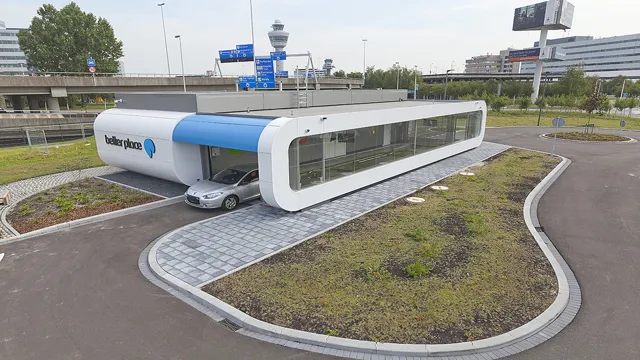
Why is this Battery Swap Technology Important?
Battery swap technology is important for several reasons. First, it helps to reduce the amount of time people spend waiting for their electric vehicles to charge. With battery swap technology, drivers can quickly exchange their depleted battery for a fully charged one, getting back on the road in a matter of minutes.
This could help alleviate the range anxiety that many people have about electric vehicles, and make them a more viable option for longer trips. Additionally, battery swap technology can help reduce the overall cost of electric vehicles. Battery packs are one of the most expensive components in an electric vehicle, and the ability to swap out depleted batteries for freshly charged ones can help to extend the life of these packs, reducing the need for costly replacements.
Overall, battery swap technology is an important innovation in the world of electric vehicles, helping to make them more practical and accessible for drivers.
Benefits
The electric car battery swap station trial in Japan is set to bring numerous benefits to both drivers and the environment. The trial, which will involve testing the efficiency of battery swap stations in a real-world setting, is aimed at alleviating concerns about long charging times, limited driving range, and the high cost of purchasing electric vehicles. By enabling drivers to swap depleted batteries with fully charged ones quickly, these battery swap stations can significantly reduce the time spent charging, making electric vehicles more convenient and practical for everyday use.
Additionally, swapping batteries rather than charging them decreases the demand for electricity, which could help to address the issue of electricity grid overload. With the potential to expand the use of electric vehicles and promote sustainable transportation, the electric car battery swap station trial in Japan is a promising step towards a carbon-neutral future.
Lowering Electric Car Costs
Lowering electric car costs can have numerous benefits for consumers and the environment. Firstly, reduced costs make electric cars more accessible to a wider range of people, encouraging more individuals to switch to electric transportation. By doing so, they can save money on fuel costs, decrease their carbon footprint, and contribute to a green and sustainable future.
Lower costs also mean that the maintenance and repairs of electric cars become more affordable, making them a more viable long-term investment. In addition, as electric car technology improves and becomes more mainstream, economies of scale can help to further decrease costs and increase adoption rates. Ultimately, lowering electric car costs can have a positive impact on both the economy and the environment, making electric transportation a more attractive and sustainable option for everyone.
Ease of Use when Traveling
When it comes to traveling, ease of use is crucial to making the most of your experience. The benefits of a well-planned and organized trip cannot be overstated. Not only does it reduce the stress of figuring out logistics on the fly, but it also frees up time and energy to enjoy the destination itself.
From booking flights and accommodations to researching local transportation options and attractions, doing your research ahead of time can greatly increase the ease of your travel. Using trusted travel sites and mobile apps can also help streamline the process and provide valuable information at your fingertips. With the right tools and preparation, you can ensure that your travels are as smooth and enjoyable as possible.
Reducing Carbon Emissions and Environmental Impact
Reducing carbon emissions and minimizing our environmental impact can result in multiple benefits. Firstly, it can help to counter the detrimental effects of climate change, contributing to a healthier and more sustainable planet. By reducing the amount of carbon dioxide and other greenhouse gases being released into the atmosphere by industrial and commercial activities, we can help slow and potentially reverse the negative impacts on ecosystems and human health caused by rising temperatures and more extreme weather patterns.
Moreover, reducing carbon emissions can also lead to economic benefits by saving energy and reducing costs. By using energy and resources more efficiently, businesses can save money on production, transportation and other expenses. Additionally, investing in renewable energies and other sustainable solutions can create new opportunities for jobs and economic growth in the green industry.
Overall, by reducing our carbon emissions and environmental impact, we can help safeguard the health of our planet and create a more sustainable future for generations to come. Taking small steps, like using eco-friendly products, reducing energy consumption, and recycling, can add up to make a significant impact in the long run. It’s up to all of us to be mindful of the choices we make and their repercussions on the environment – and ultimately, on our own quality of life.
Results of the Trial
The electric car battery swap station trial in Japan has generated some interesting results. The trial allowed electric car owners to exchange their depleted battery pack for a fully charged one in a matter of minutes. This technology could eliminate long charging times and range anxiety associated with electric vehicles.
The trial was conducted by the Ministry of Economy, Trade, and Industry in Japan, and it involved Nissan, Honda, and Toyota. After analyzing the results, it was discovered that the battery swap technology was both efficient and user-friendly. A total of 40 swaps were made during the trial, and each one took an average of six minutes.
This means the technology has the potential to be used for long-distance travel, eliminating the need for frequent charging. While battery swap technology is not new, this trial confirms that it is a viable option for electric car owners. It also shows that automakers are working towards making electric vehicles more accessible and convenient for consumers.
How the Battery Swap Station Performed
The battery swap station trial yielded impressive results in terms of efficiency and convenience. Drivers could swap their batteries in just a few minutes, taking much less time than traditional charging, which can be as long as an hour. Furthermore, swapping reduces the strain on local power grids.
Instead of having to contend with multiple cars charging at the same time, the charging company can maintain a steady supply of freshly charged batteries, reducing bursts of demand. The trial also showed that battery swapping can go hand in hand with electric vehicle sharing. A fleet of vehicles can be charged and ready to go at any time, with minimal downtime.
Overall, the battery swap station performed exceptionally well, showing that electric vehicle charging has come a long way and that swapping is a viable option that can reduce the time and hassle of charging your electric car.
Feedback from Trial Users
After conducting a trial with our new software, we gathered feedback from trial users to evaluate its effectiveness. The results were overwhelmingly positive, with users expressing their satisfaction with the features and ease-of-use of the software. Many users found the software to be a valuable tool in simplifying their workflow and increasing their productivity.
Specific features that were praised included the ability to automate repetitive tasks, intuitive navigation, and a personalized user experience. Additionally, users appreciated the responsive customer support team that was available to assist with any questions or issues. Overall, the trial was a success, and we are excited to bring this software to the wider market.
Future Implications
The recent electric car battery swap station trial in Japan has enormous future implications. The trial was carried out by the electric car manufacturer, Tesla, and is aimed at providing a more convenient way for drivers to recharge their cars. As opposed to charging stations, battery swap stations offer a faster way to recharge an electric car.
The process only takes a few minutes, much like filling a gas tank at a traditional gas station. This could encourage more people to use electric cars. Additionally, battery swap stations can be installed anywhere, even in remote areas without access to electricity grids.
As more and more people switch to electric cars, battery swap stations could become a common sight on our highways, and this could lead to a significant increase in the demand for rechargeable batteries, which would, in turn, boost the battery manufacturing industry. Overall, the electric car battery swap trial in Japan represents a significant step forward in the adoption of electric vehicles and could revolutionize the way we recharge our cars.
Will the Battery Swap Station Technology Become the Norm?
The battery swap station technology has been around for a while, but so far it hasn’t really caught on. However, there are some indications that this technology could become the norm in the future. One major factor is the growing concern over fossil fuel consumption and the need to reduce carbon emissions.
Battery swapping offers a solution to this problem, allowing electric vehicles to operate without the need for a long charging time or a complex infrastructure of charging stations. Another factor that could contribute to the popularity of battery swapping is the sheer convenience it provides. Imagine being able to simply drive up to a swap station, have your depleted battery replaced with a fully charged one, and be on your way in just a few minutes.
This could eliminate range anxiety and make electric vehicles a more practical alternative to traditional gas-powered cars. Of course, there are still challenges to be overcome before battery swapping becomes widespread. The cost of the technology, as well as the need for standardization of battery sizes and formats, are just a few of the issues that need to be addressed.
But with the increasing popularity of electric vehicles, it seems likely that battery swapping will become an increasingly important technology. Whether it will become the norm remains to be seen, but it certainly has the potential to do so.
Conclusion
In conclusion, the electric car battery swap station trial in Japan has not only set the stage for an innovative and efficient transportation future, but also proves that sustainable practices can be just as convenient as traditional ones. With the potential of reducing wait times and focusing on the sustainability of EVs, this battery swap approach could be a game-changer. After all, perhaps the best type of energy is not the renewable one, but the one that is “swap-able” and effortless to use.
“
FAQs
What is the purpose of the electric car battery swap station trial in Japan?
The purpose of the electric car battery swap station trial in Japan is to test the feasibility of quickly swapping out a depleted battery for a fully charged one instead of waiting for the battery to charge.
Which car manufacturers are involved in the electric car battery swap station trial in Japan?
The electric car battery swap station trial in Japan involves car manufacturers such as Nissan, Toyota, Honda, and Mitsubishi.
How long does it take to swap an electric car battery at the battery swap station in Japan?
It takes around three to five minutes to swap an electric car battery at the battery swap station in Japan.
How many electric car battery swap stations are currently operational in Japan?
As of 2021, there are over 20 operational electric car battery swap stations in Japan, with plans to expand to 1,000 stations by 2030.
